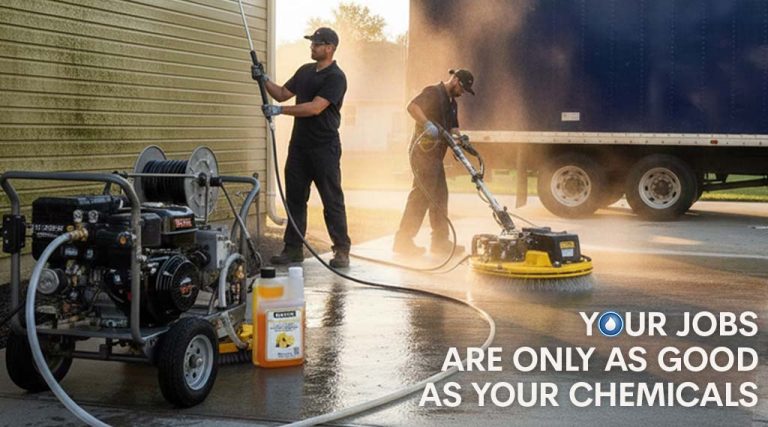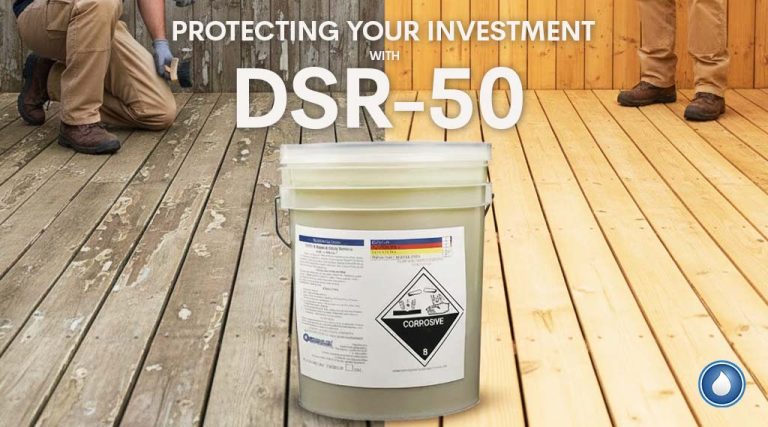I pulled the trigger of a power washer at the early age of twelve, in 1978, when my dad let me ride along with him one weekend to do fleet washing. It was the coolest thing to be out with my dad and experience the force and awesome blasting power of that pressure washer. To this day, I still love to pull the trigger and witness the sheer force of watching water blast dirt, grime and other pollutants off dirty surfaces to reveal a shiny clean surface below. And the cool thing is there are so many different items that can be cleaned with a power washer. The list is long but some of the more common items are houses, roofs, gutters, big rigs, construction equipment, farm equipment, kitchen exhaust systems, vehicles, buildings, boats, sidewalks, drive thrus, dumpster areas, loading docks, etc. All these items can be rewarding and fun to wash but there is one thing that must be present to power wash and that’s water.
Water is not always a resource that can be found near the wash site. If it is available, make sure that there is a high enough flow to keep up with the gallons per minute, GPM, of the machine and that the water is clean, so it will not cause damage to the pump. But, what do you do if there is no water or the water flow is not sufficient to keep up with the GPM of the machine? This is when you should use a holding tank. The size of the tank can vary drastically and should be chosen based on the following five points:
-
- Truck or trailer maximum gross vehicle weight. Combine all the weight of the items that will typically be needed to perform the cleaning service to be provided. Take this weight and subtract it from the available load capacity of the truck or trailer. This number then can then be divided by 8.34, the weight of 1 gallon of water, to determine what the maximum size tank could be used. For example, if a three-quarter ton truck is used and the total of all the equipment weight is five hundred pounds then take 1500 – 500 = 1000 pounds of available carrying capacity for water. Which equates to 1000 / 8.43 = 119.9 or a 120 gallon water tank.
-
- How often will water be needed at a jobsite(s)? If the primary service market will be at job site where water is normally available, then the choice may be not to do jobs that don’t have water. On the other hand, if having water can create a competitive advantage over others that don’t want to fully invest in the equipment to service these customers then it may create an opportunity for charging a higher price to service these customers.
-
- How far away is the water source? Some customers or regions may be located where there normally isn’t water. In this situation, it is advised to have enough water capacity to run for several hours, around five to eight. This will vary based on the needed GPM, so a capacity of five hundred to two thousand gallons in not uncommon. Of course, this is the extreme, in most cleaning scenarios water will be close enough that being able to wash for one to two hours will suffice before driving a short distance to refill the holding tank.
-
- What is the average GPM in the area? Most power washing contractors are going to clean with machines that run four to eight gallons a minute. This means that the water source coming from the tap needs to be able to keep up with the flow needed to constantly supply the pump with water. Otherwise, it will cavitate or pull air into the supply line and potentially cause damage to the pump. If sufficient water flow is not available, then using a small holding tank of fifty to one hundred fifty gallons can be used to buffer the supply of water. So, when first arriving at the jobsite the water connection can be established and turned on to start filling the tank. As prep work and jobsite planning is performed the water tank can be filling up. Then when the work begins the pressure washer will have a sufficient supply of water. That is until the water level gets low enough that it begins to suck air. In some cases, in may make more sense to come with a full tank then allow the water flow to replenish as much as it can so that delays are minimized. Otherwise, taking short breaks will be needed to allow the holding tank to replenish before washing can resume.
-
- Cost of hauling water. Keep in mind that hauling extra water weight can be expensive, increasing fuel cost. So only do it when necessary. Drain the tank when the water supply will be more than ample on the upcoming jobsite. And try to determine what the smallest size tank will be needed to provide water.
Water is the life blood of power washing. Without it, the pressure washing process cannot happen. So always think ahead and plan for the specific wash scenarios so that an adequate supply of water is available to complete a project.




